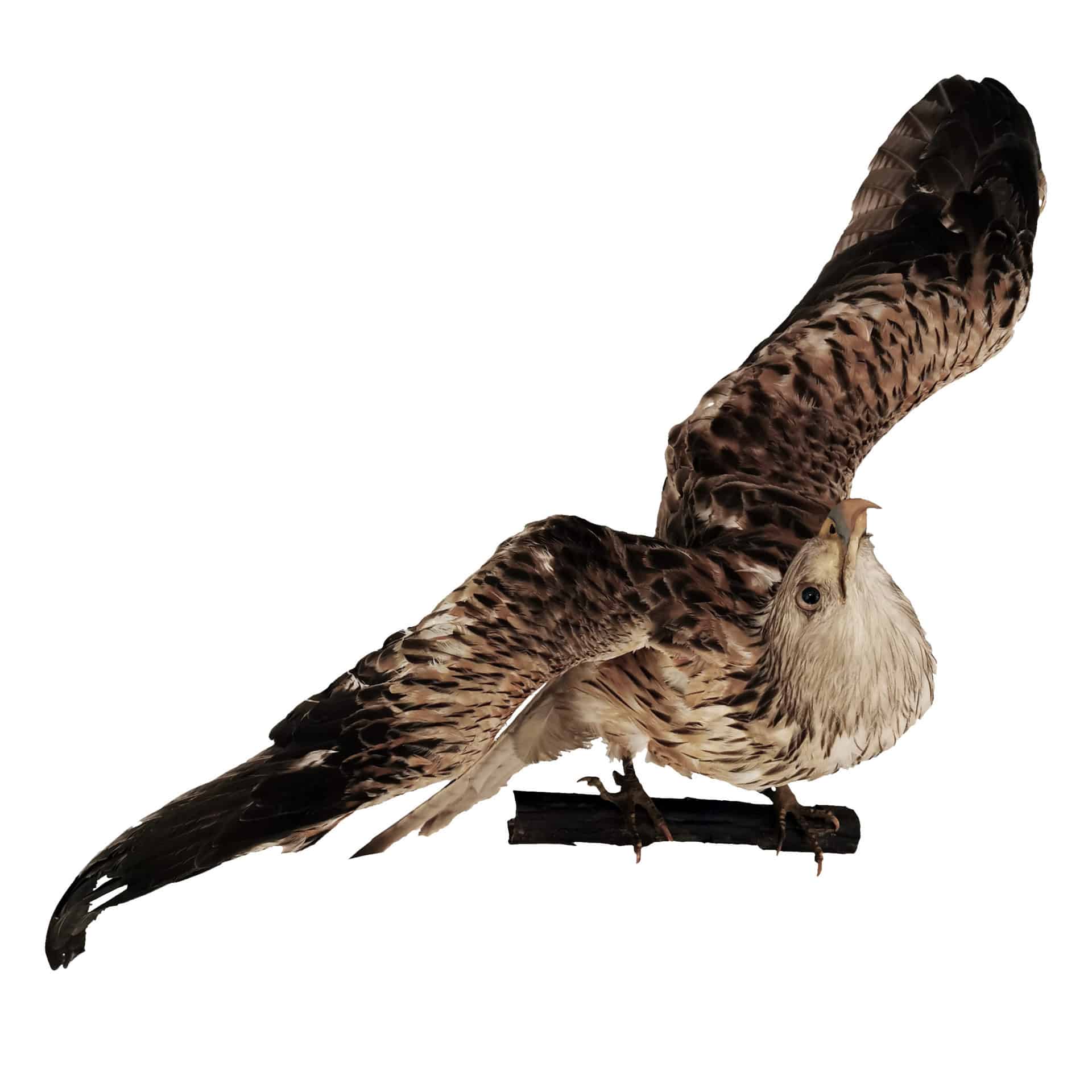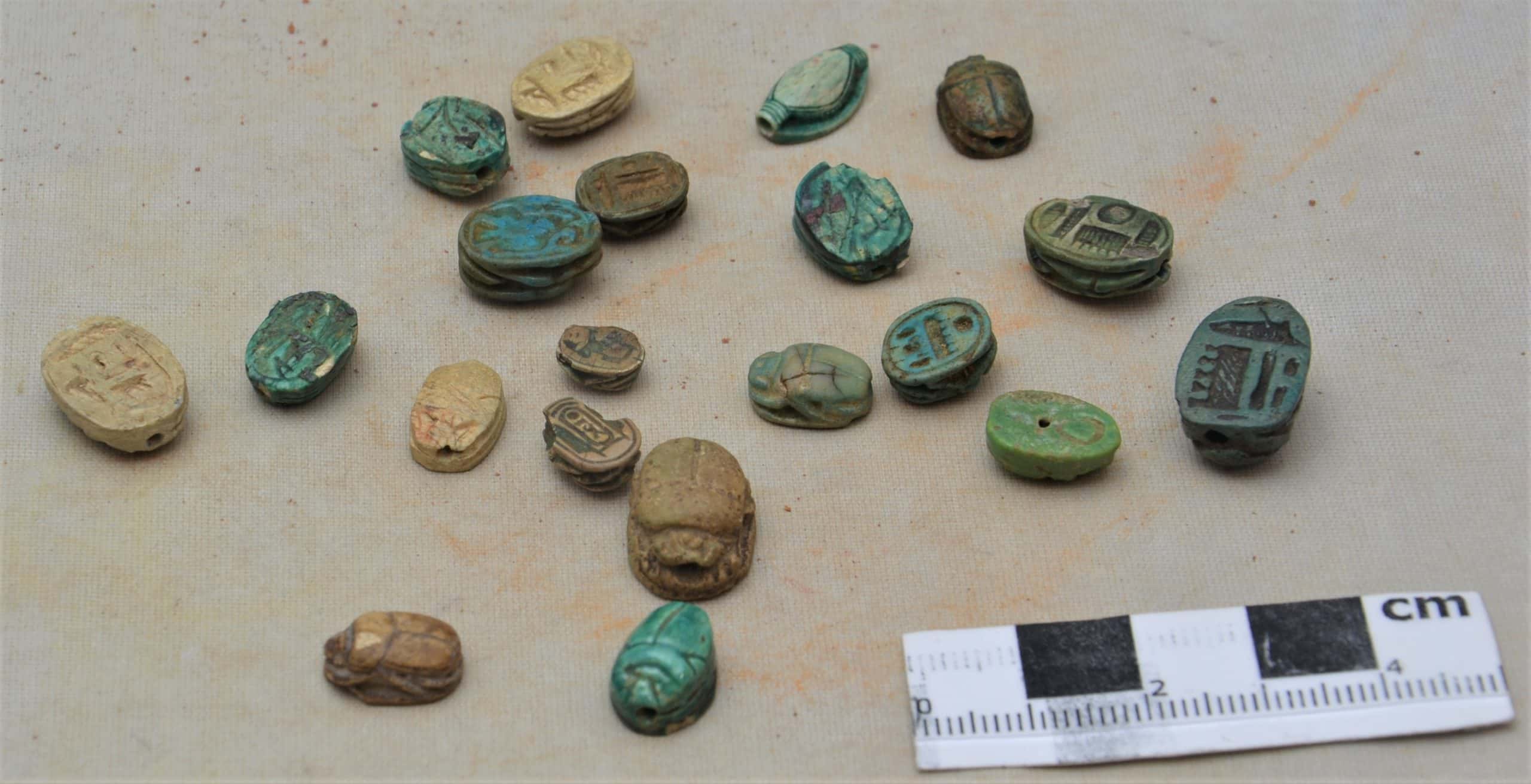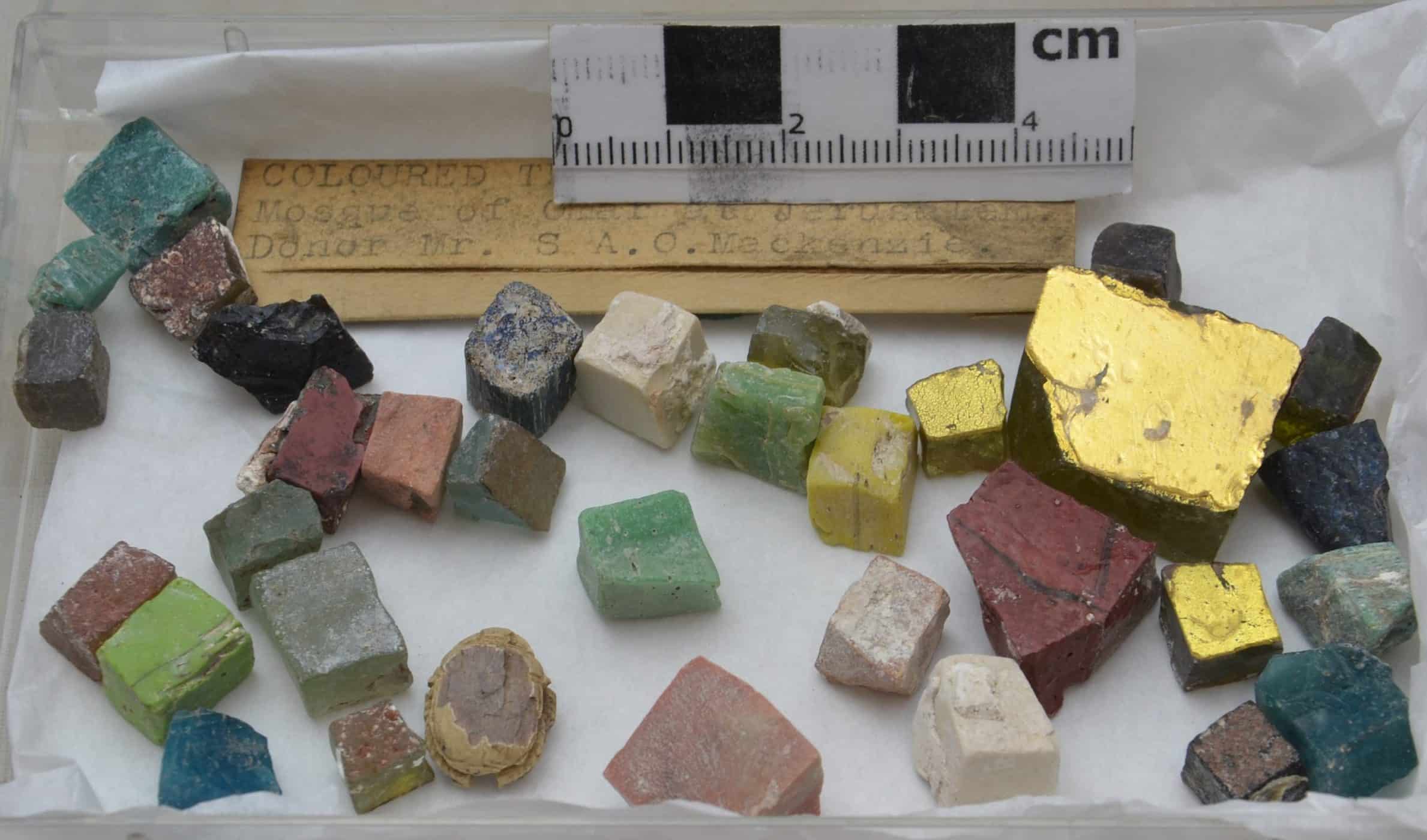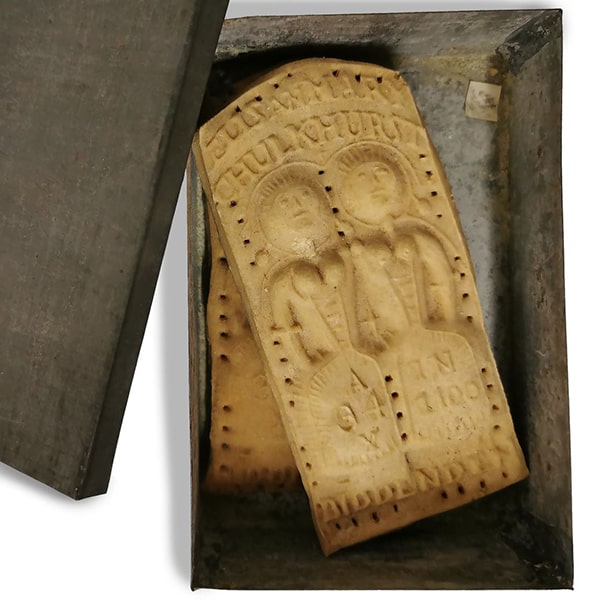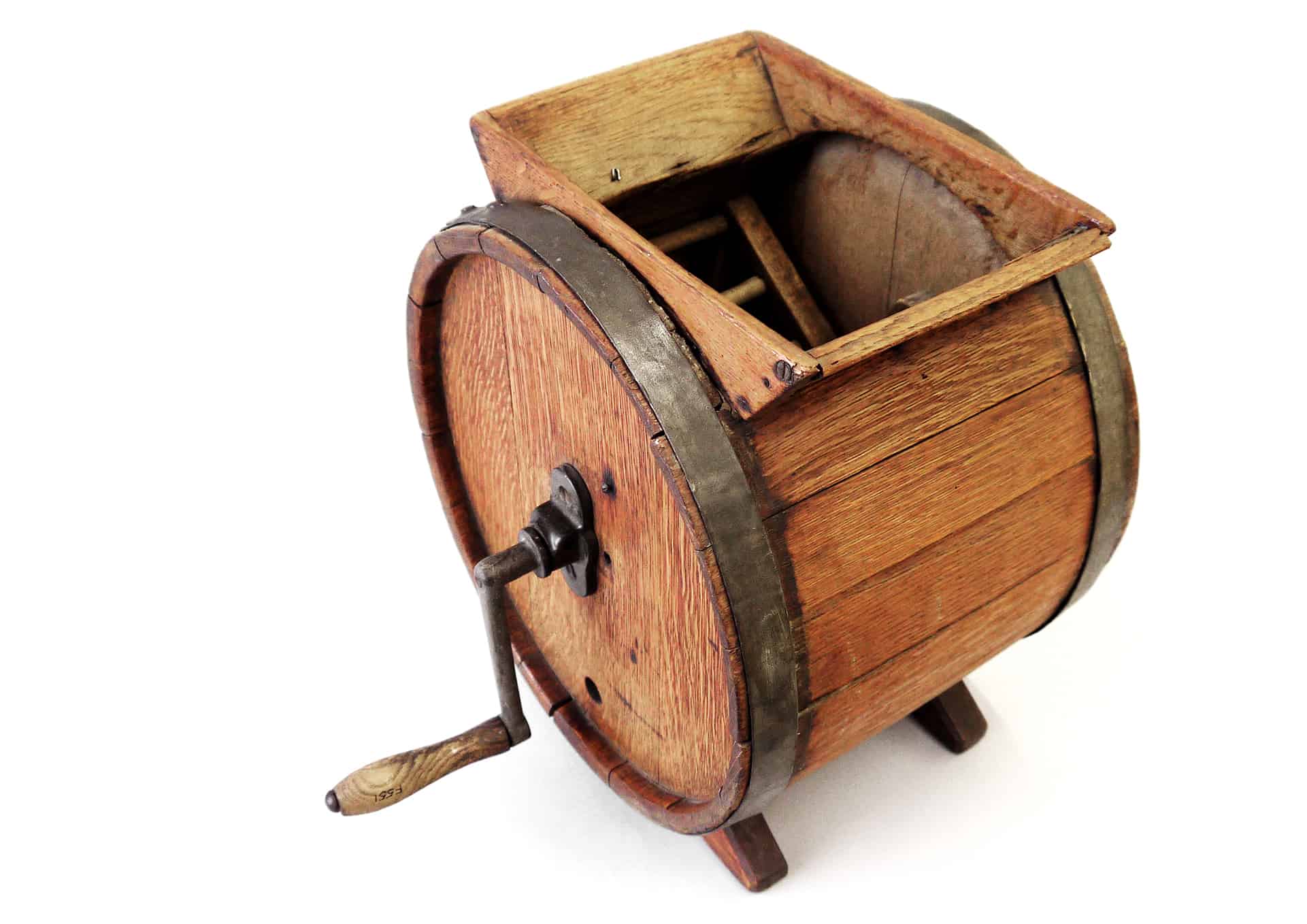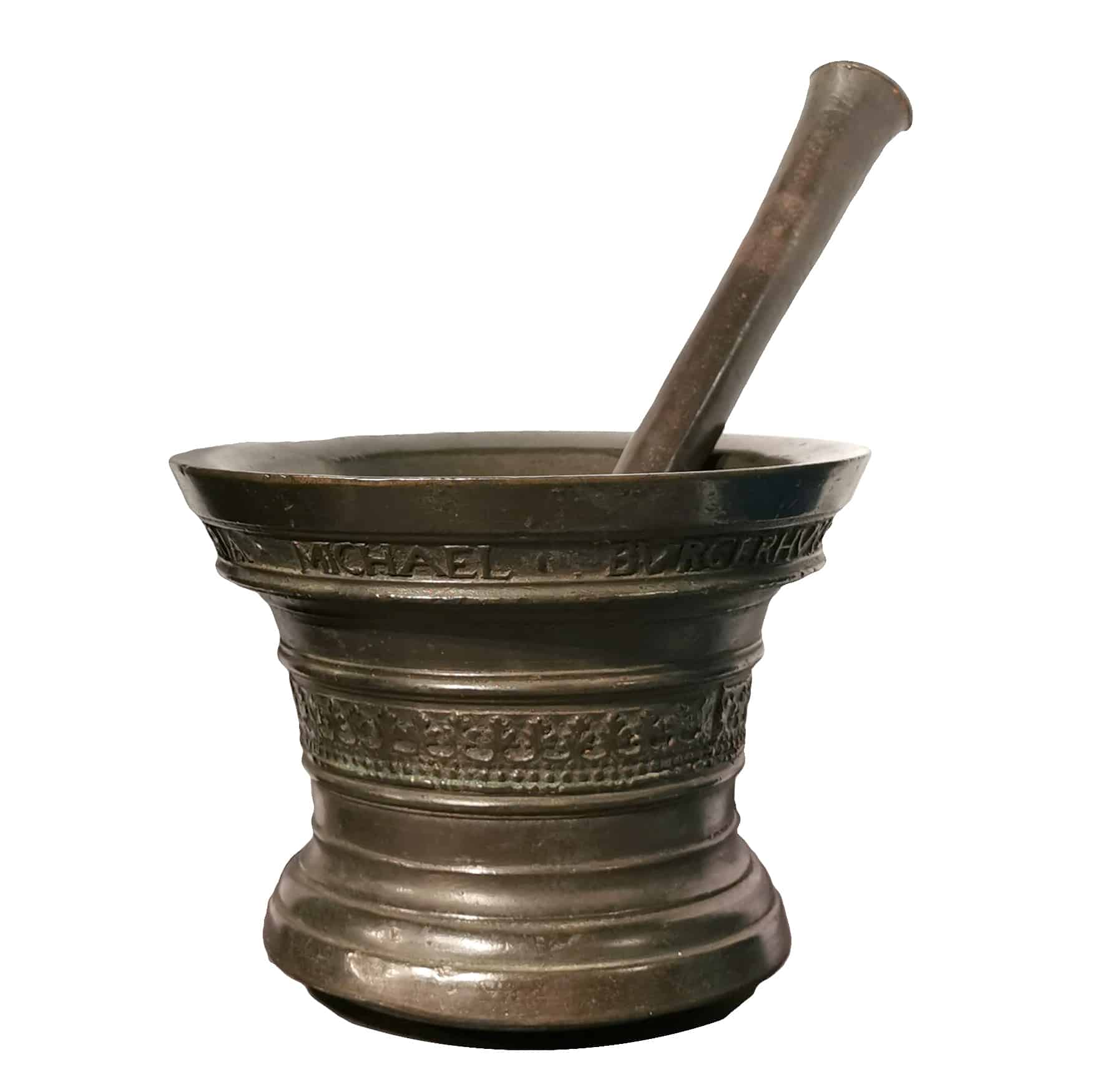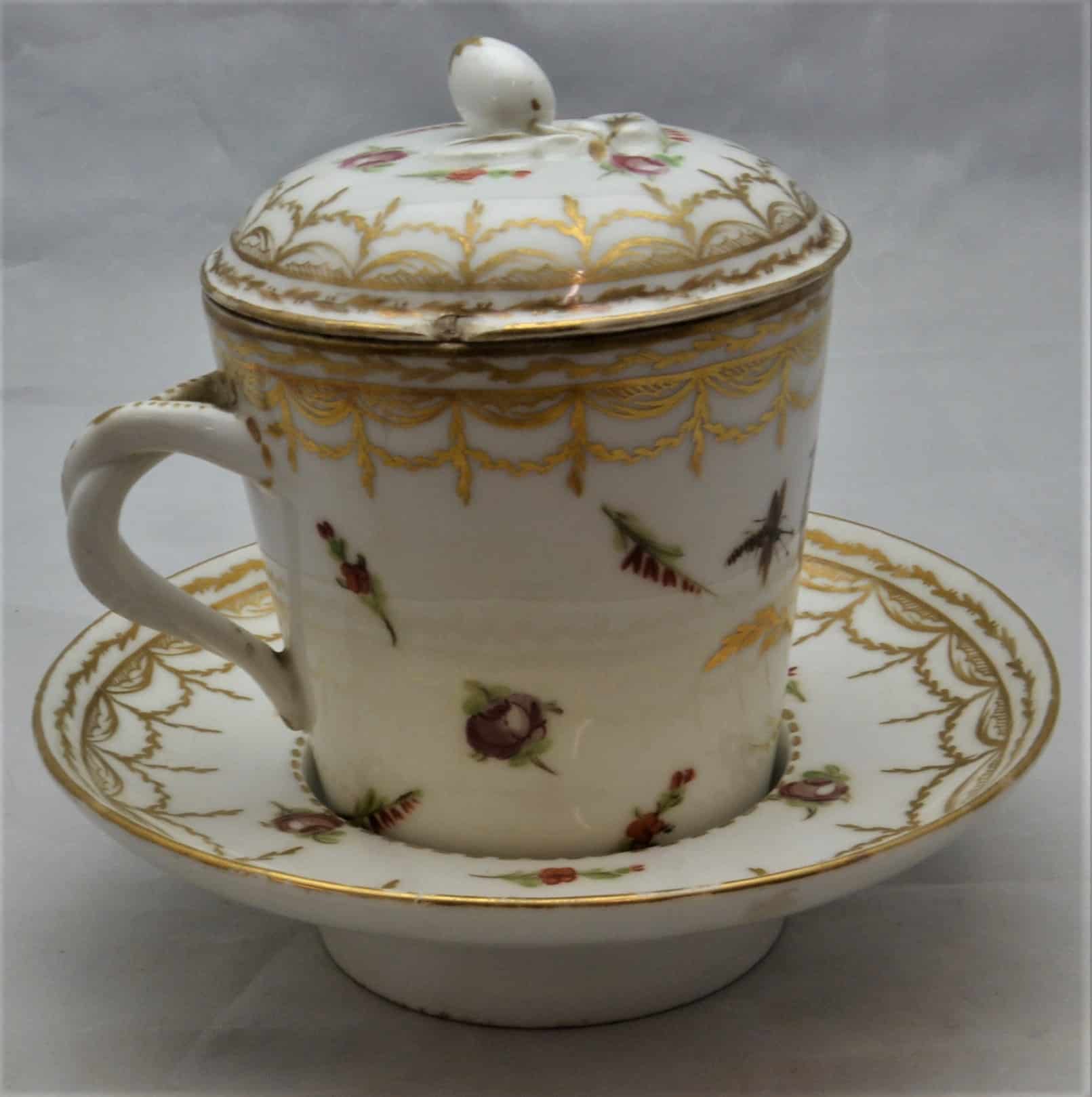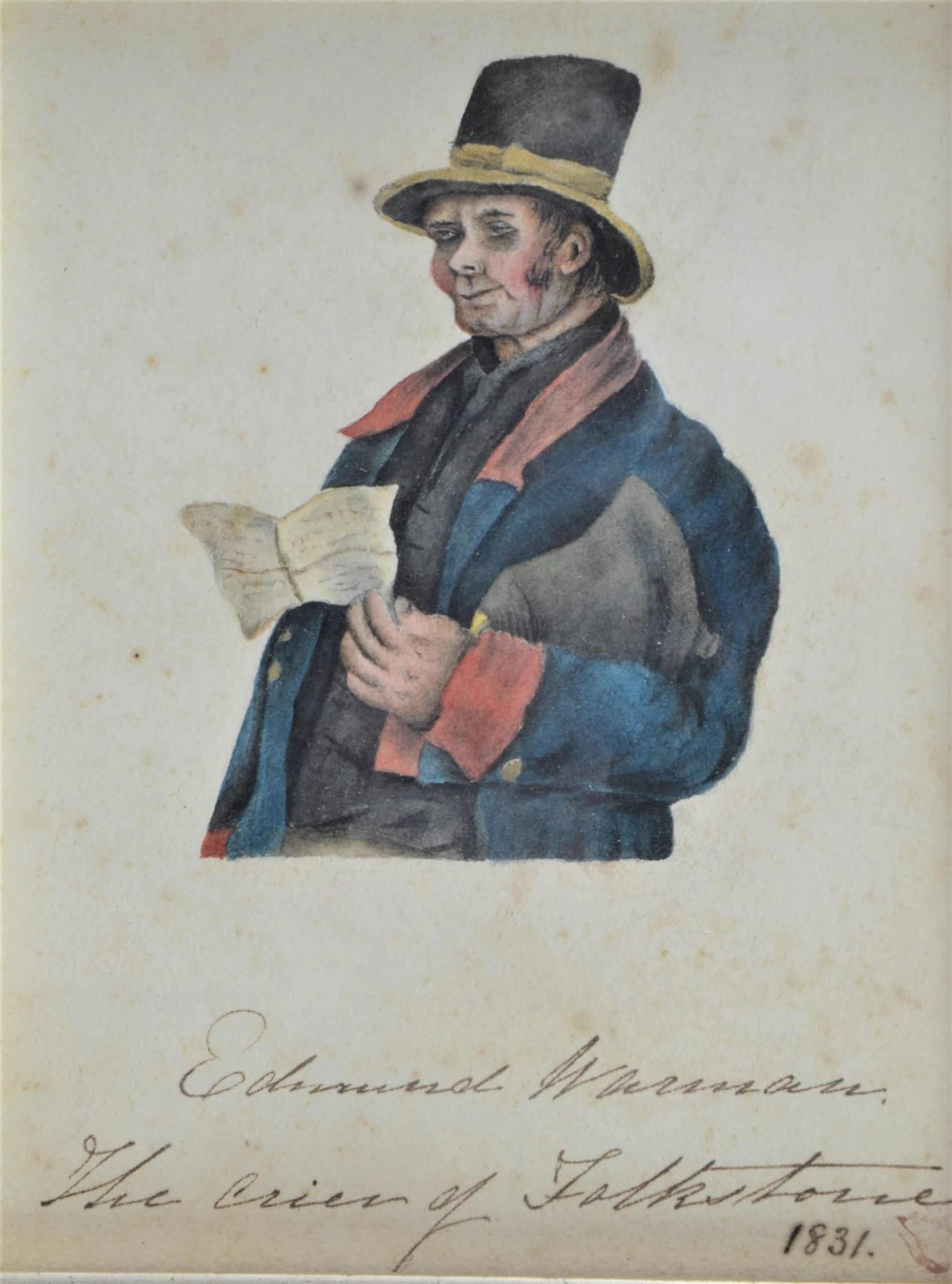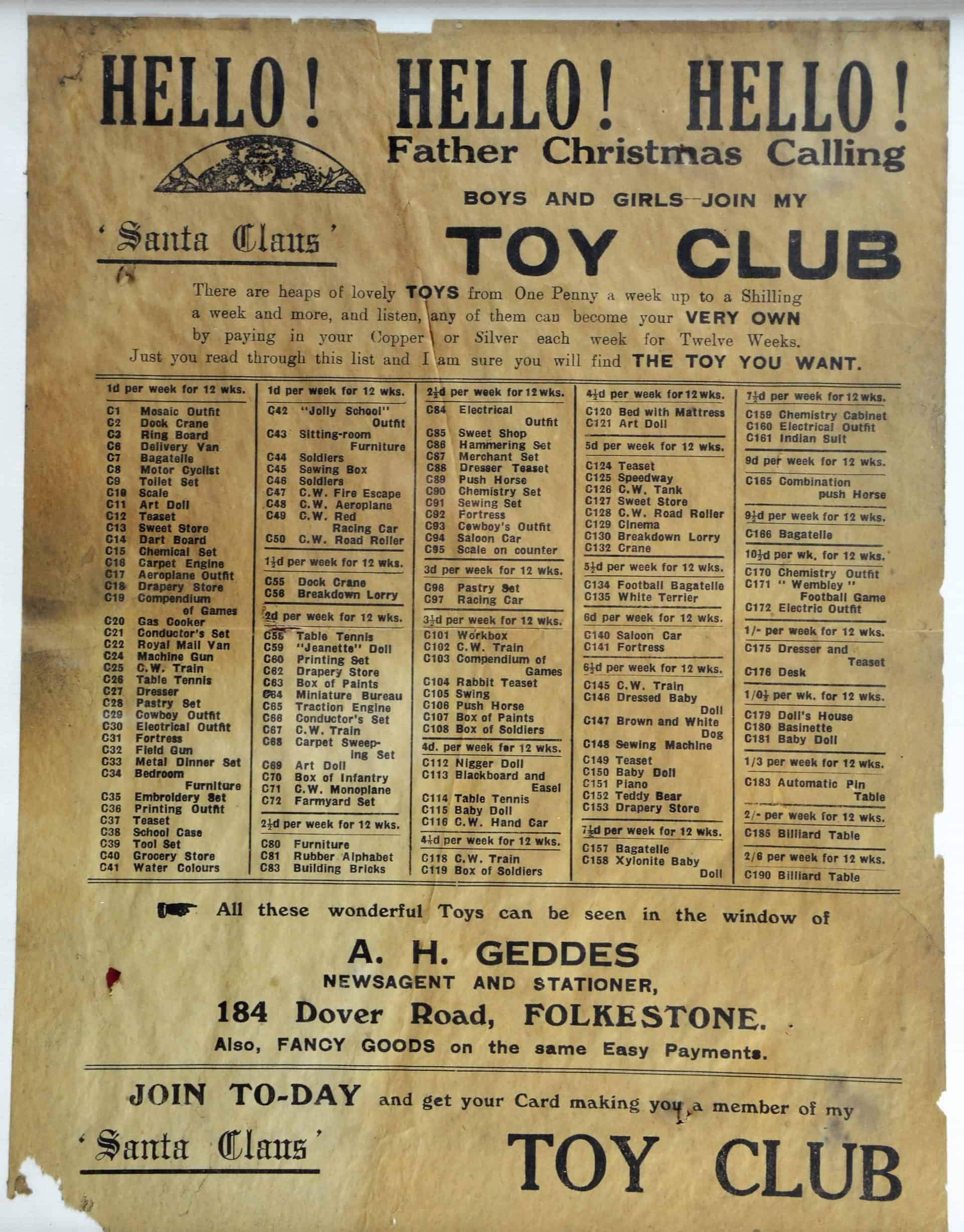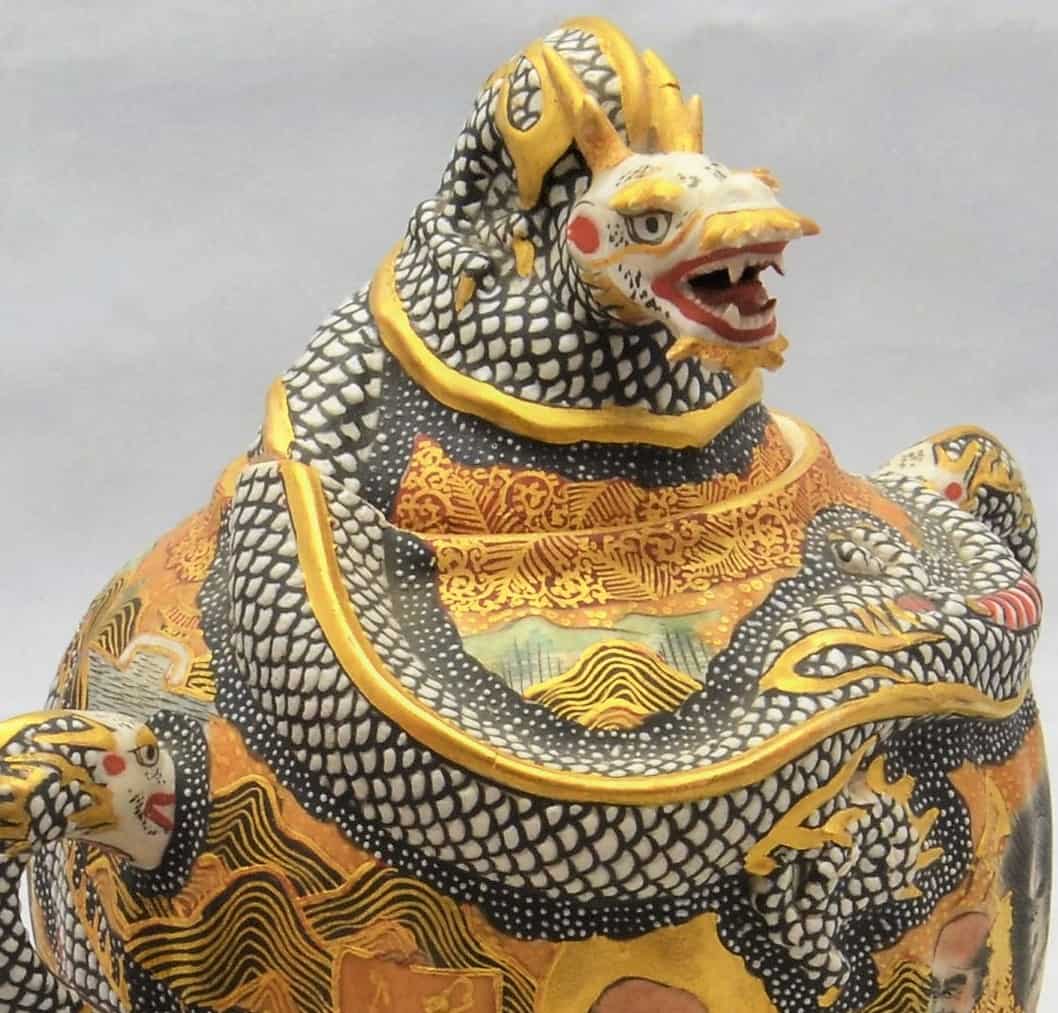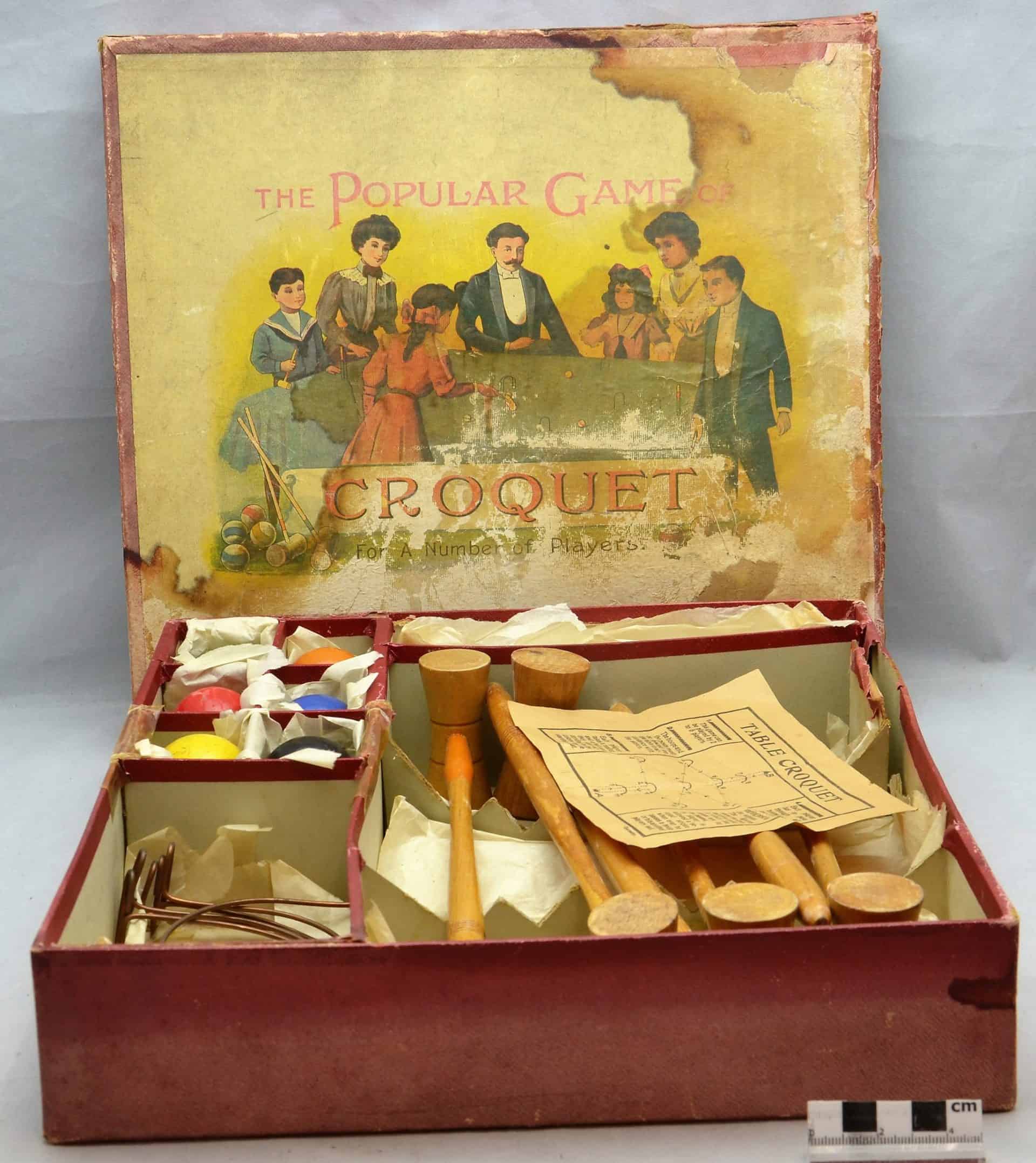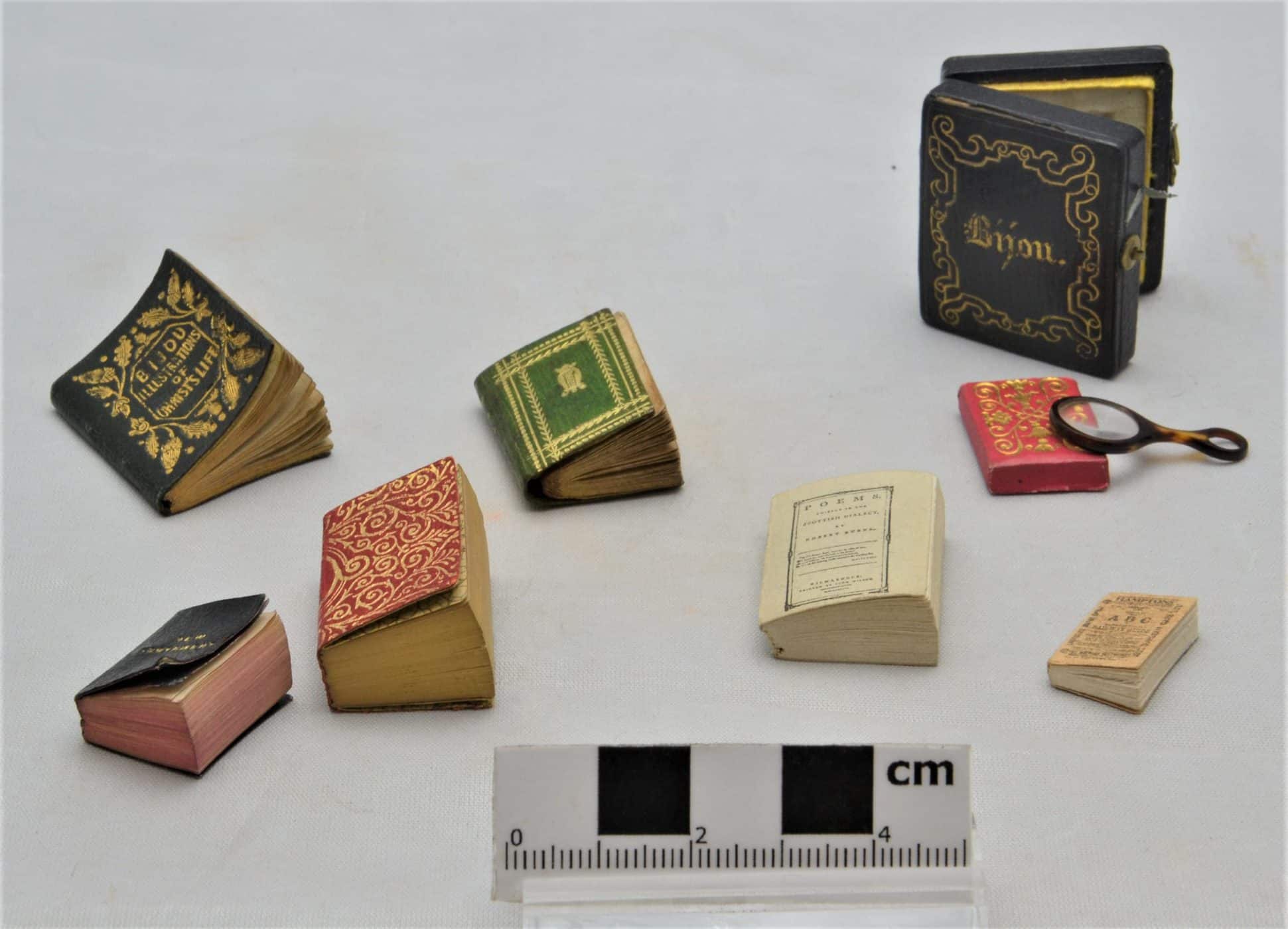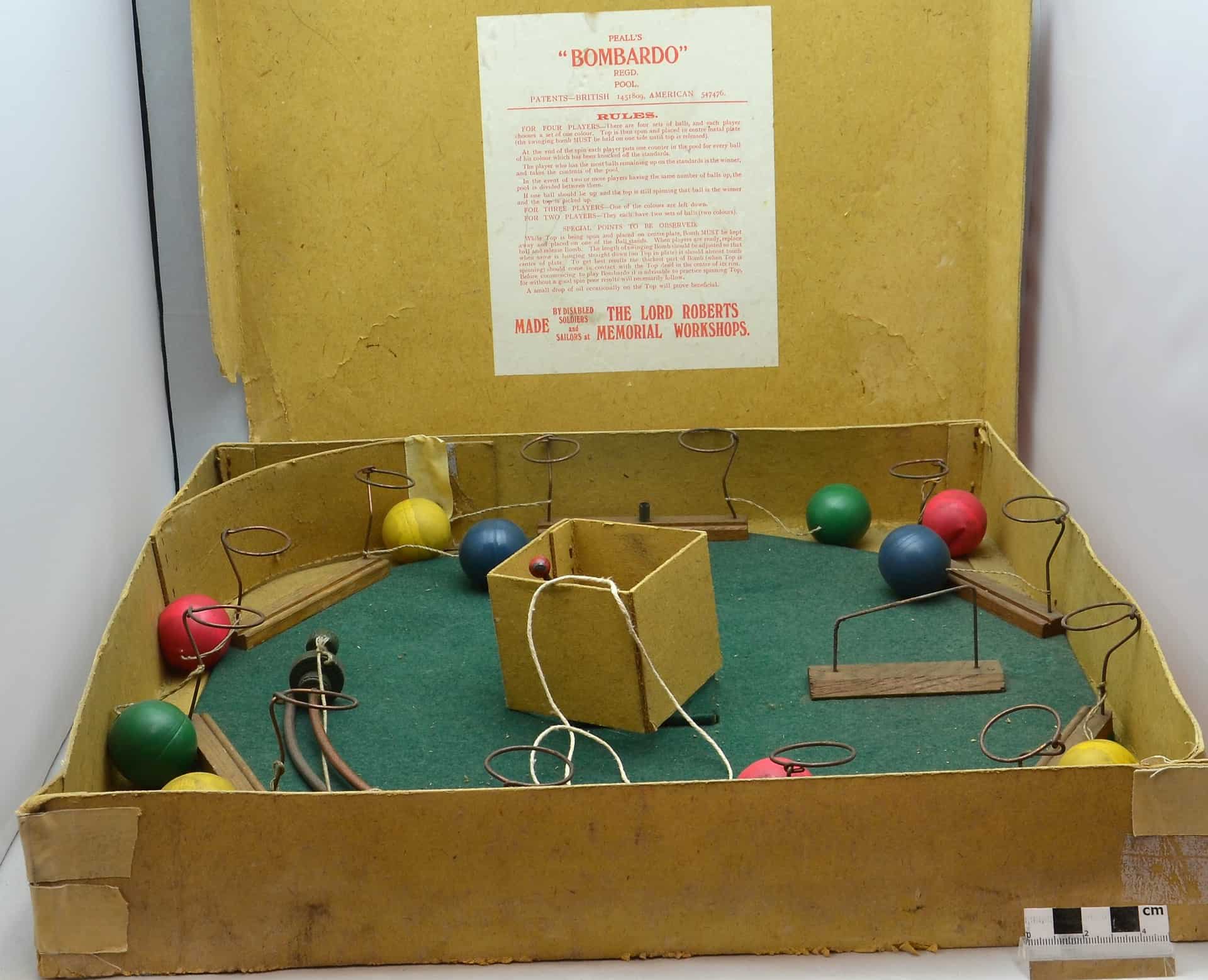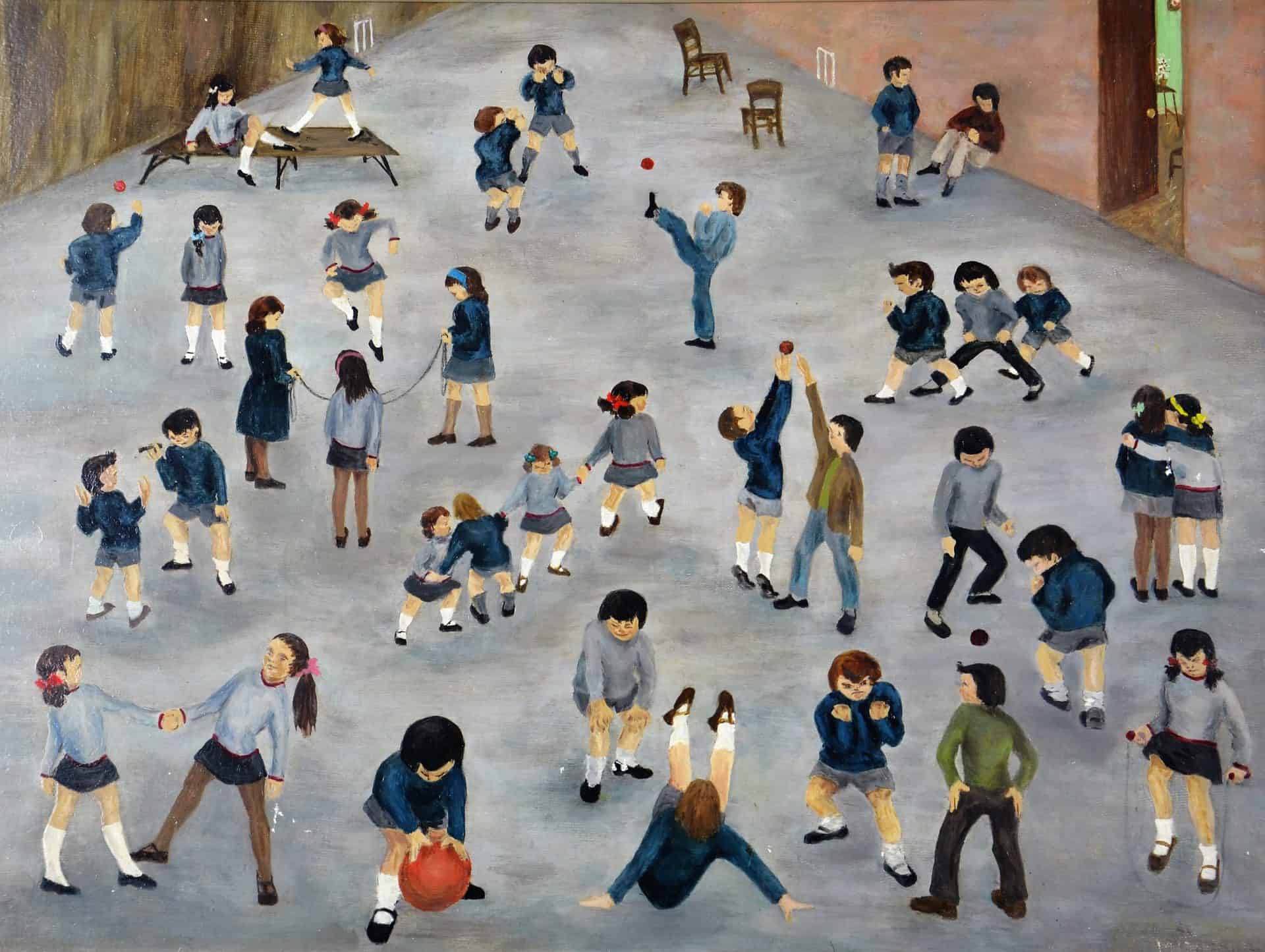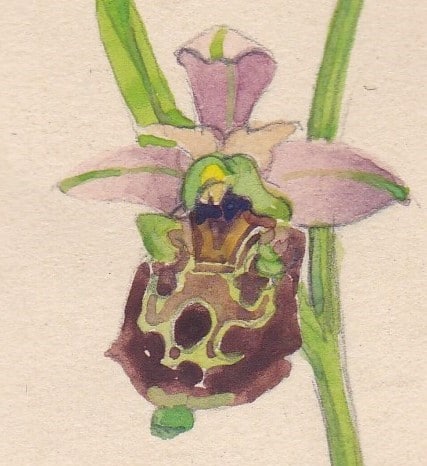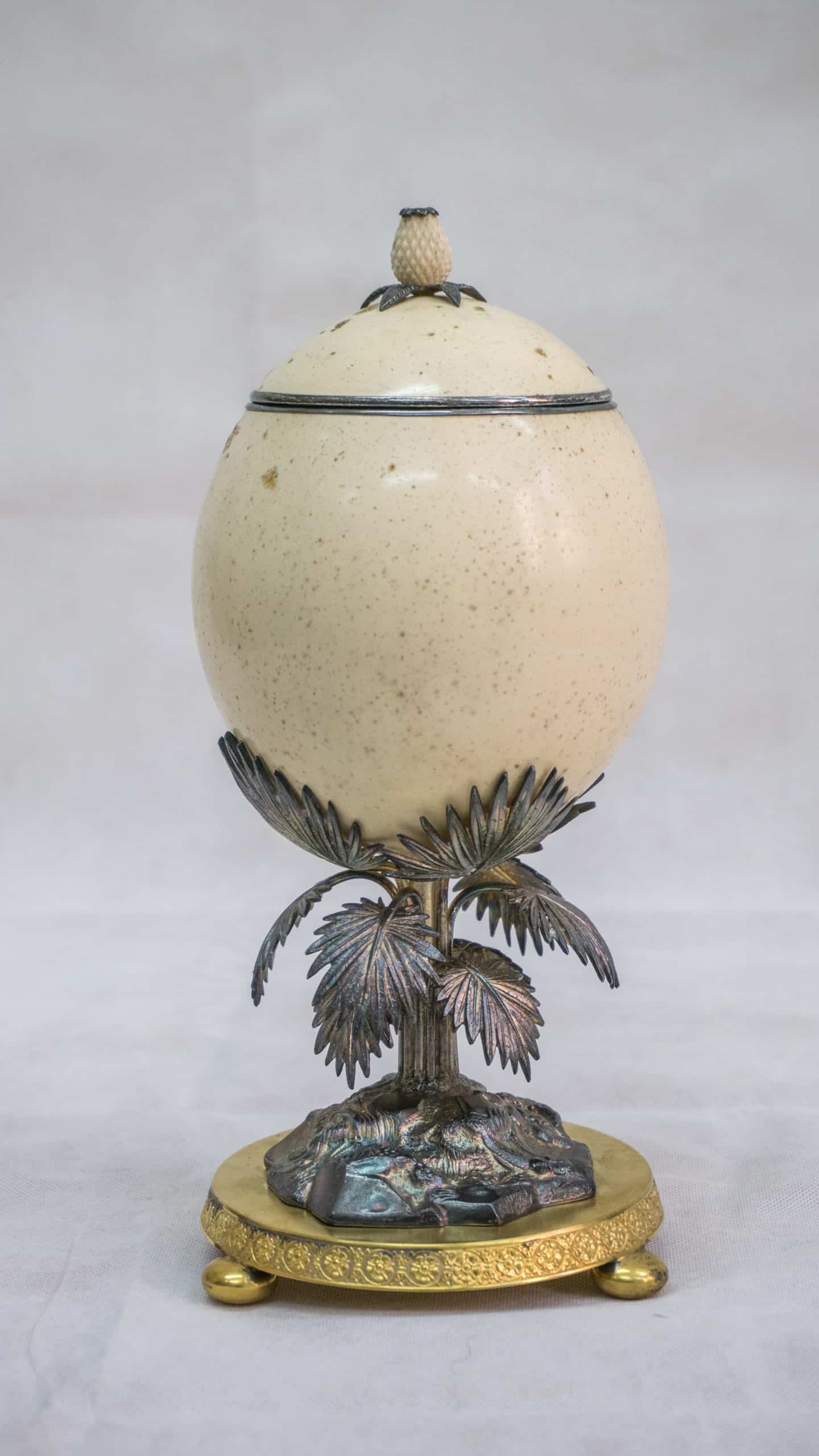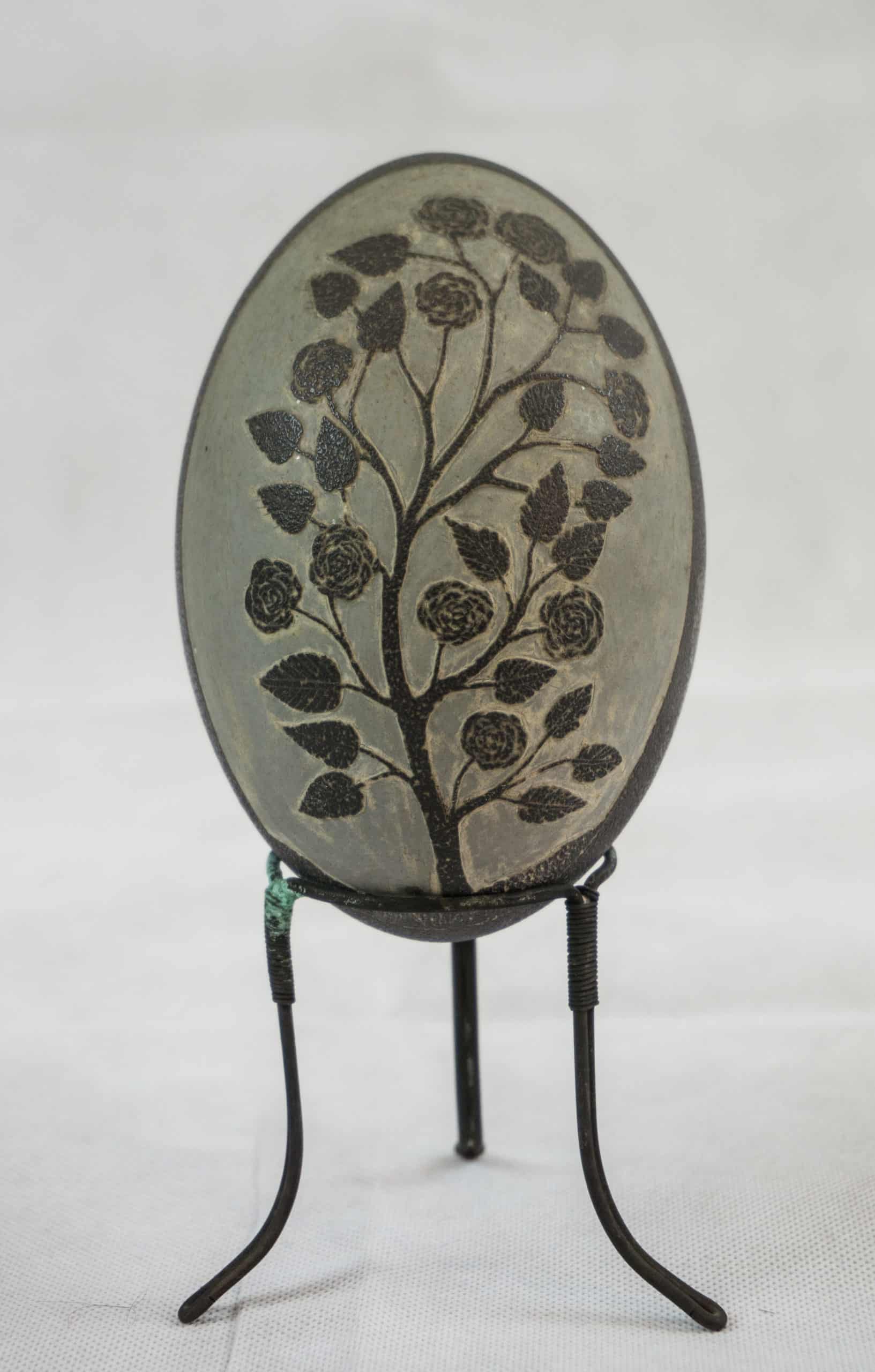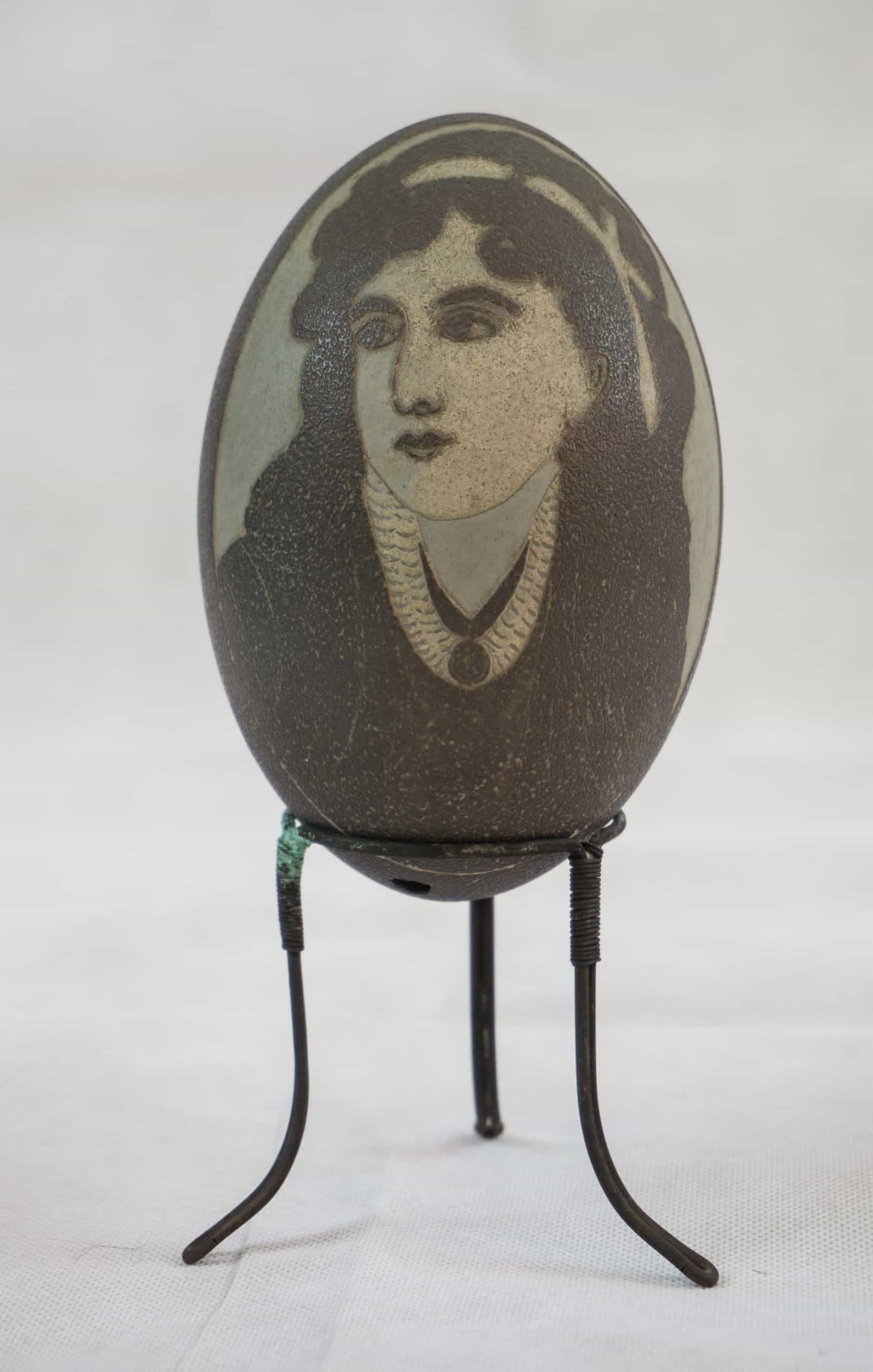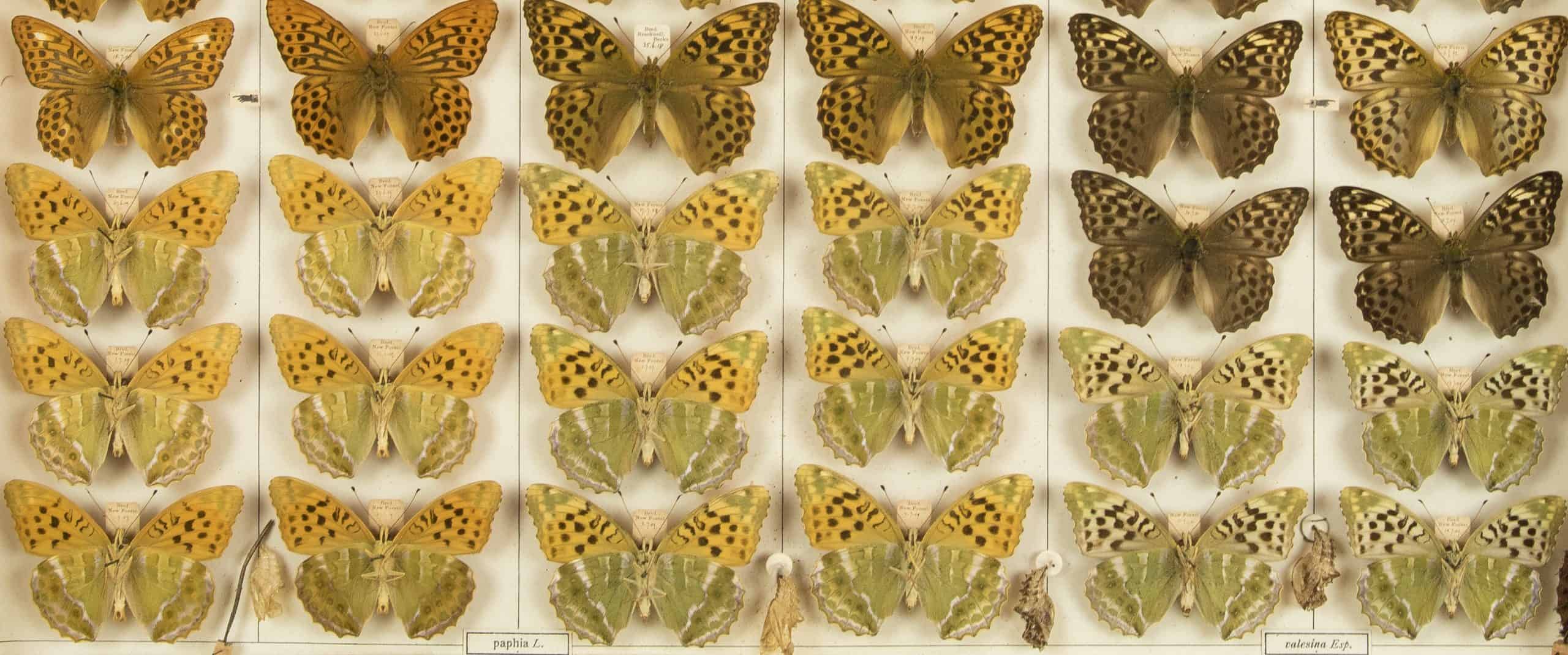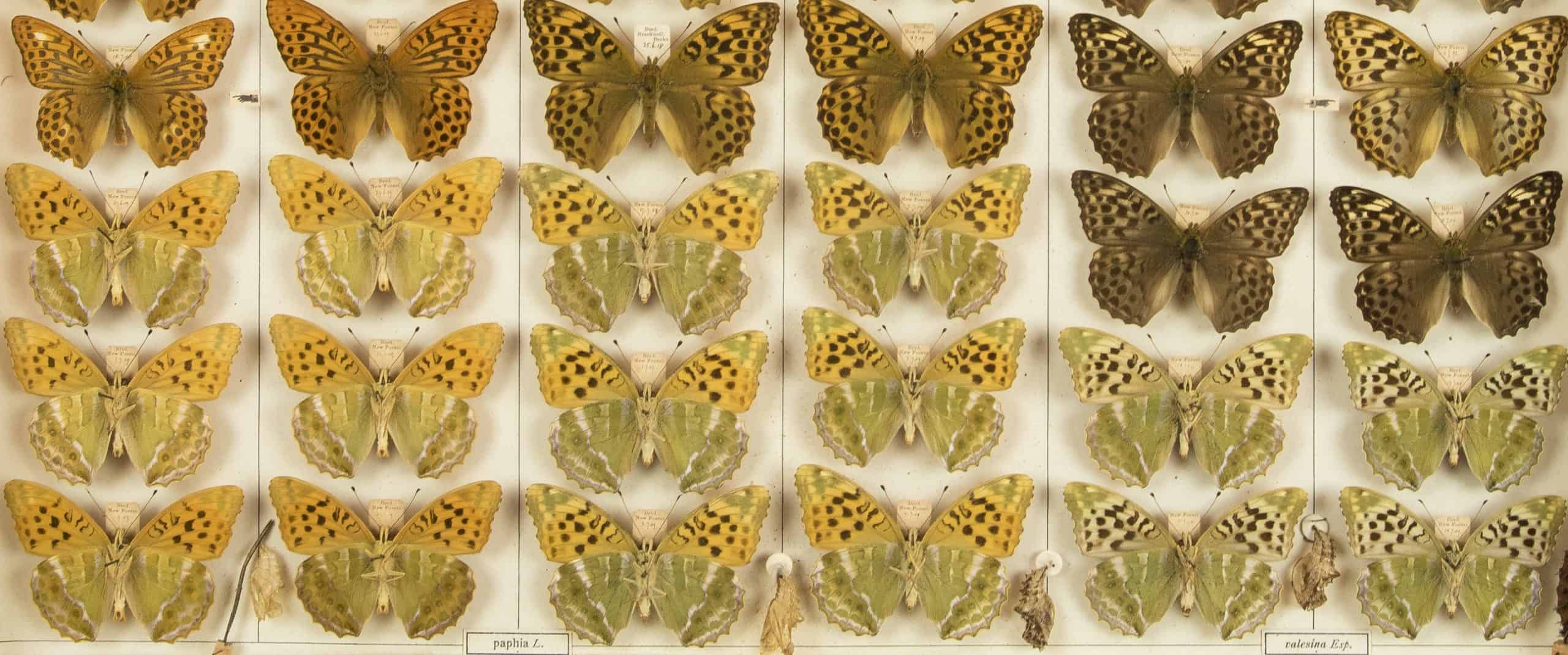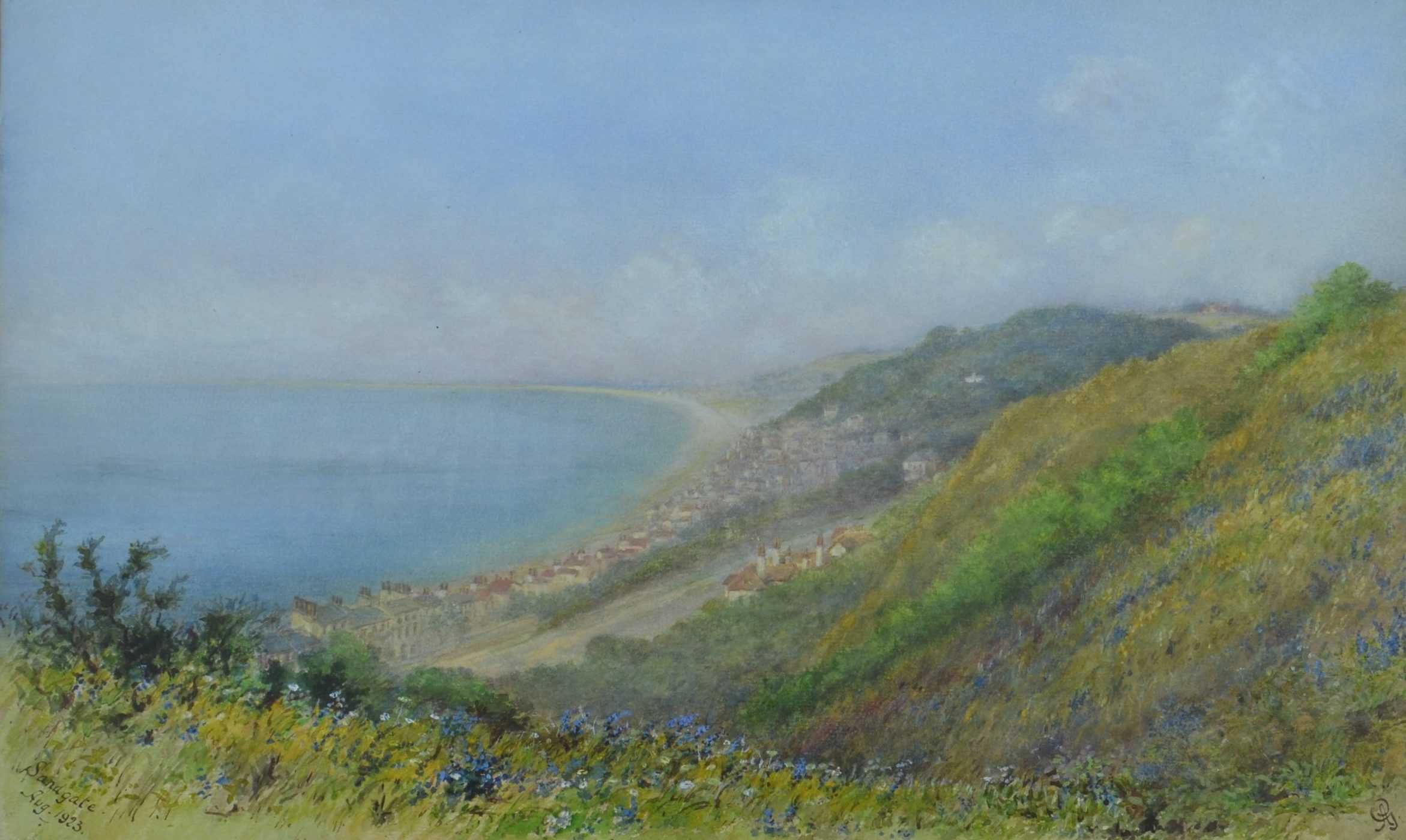Needlework sampler made by 12 year old Elizabeth Brazier at Lyminge National School in 1882. Elizabeth was one of 8 children living with her parents, Robert and Jane Brazier at Etchinghill,.
Object: Cabinets of Curiosity
Red Kite bird specimen
Mounted specimen of a red kite. Red kites are birds of prey whose diet includes mice, voles, shrews and rabbits. They grow up to 70cm high with a maximum wingspan of 1.79m. When flying, they are recognisable by their large size, red-brown colour and distinctive forked tail. Red kites were a protected species in medieval times, as they kept the streets free of rotting food, but by the 1870s had been hunted to extinction in England. Successfully re-introduced in recent years, they can again be seen in Kent, including on the white cliffs near Folkestone.
Scarab beetle amulets – Ancient Egypt
20 Ancient Egyptian scarab beetle amulets. Amulets were magic charms worn by the Ancient Egyptians to ward off evil spirits, or for good luck. They were worn in life, but also wrapped into the bandages of mummies to protect them on their journey to heaven. Most represented gods or sacred animals. The blue and green ones are made of pottery, covered in a glassy glaze called faience. The brown ones are carved from stone. You can see Ancient Egyptian picture writing (hieroglyphics) on the bottom of the amulets.
Mosaic pieces – Mosque of Omar, Jerusalem
Tesserae from the Mosque of Omar, Jerusalem. The Mosque of Omar is an important Islamic site in Jerusalem, famous for its minarets and intricate mosaics. Built in 1193 by Saladin, it replaced an earlier mosque of the same name, constructed by Caliph Omar (AD 579-664) which was located nearby. These colourful mosaic tiles (tesserae) are believed to come from one of these two sites. Made from coloured stones, green and blue glass. Some of the tesserae are covered in gold leaf.
Biddenden cakes – Mary and Eliza Chulkhurst
Biddenden cake, imprinted with the image of Mary and Eliza Chulkhurst, a pair of conjoined twins, supposedly born in Biddenden, Kent in the year AD 1100. Income from land they bequeathed to the village paid for a dole of food and drink to the poor every Easter. The legend became popular in Victorian times when thousands of rowdy visitors flocked to the village, and sometimes kept a Biddenden cake as a souvenir. Complete (with post card, explanatory poster and tin).
Butter churn
A barrel churn for making butter. These were used by dairy maids on farms around Folkestone to make butter for sale in local shops. Cream from full-fat milk was poured into the churn, and the paddles rotated by turning the handle. This shook up the cream, separating it into butter and buttermilk.
Bouverie Shield – Folkestone’s old Town Hall
This is the Bouverie Shield which was fixed above the entrance of Folkestone’s old Town Hall until it was demolished in 1858. The current town hall, which includes Folkestone Museum was built on the same site. William Bouverie, 2nd Viscount Folkestone and his family were important in the development of the town. He was made 1st Earl of Radnor in 1765. The shield is carved with the coats of arms of the Playdell and Bouverie families, with 28 ancestor families represented. The shield includes eagles, choughs, lions, swans and a dragon. The motto in Latin translates as ‘Dear is my homeland, but liberty is dearer’ (freedom is more important).
Watercolour of Bouverie Shield
Emblazonment of (watercolour painting of/key to) the Bouverie Shield which was fixed above the entrance of Folkestone’s old Town Hall until it was demolished in 1858. The current town hall, which includes Folkestone Museum was built on the same site. William Bouverie, 2nd Viscount Folkestone and his family were important in the development of the town. He was made 1st Earl of Radnor in 1765. The shield is carved with the coats of arms of the Playdell and Bouverie families, with 28 ancestor families represented. The shield includes eagles, choughs, lions, swans and a dragon. The motto in Latin translates as ‘Dear is my homeland, but liberty is dearer’ (freedom is more important).
William Harvey’s pestle and mortar
William Harvey was a famous doctor and scientist who discovered the circulation of the blood. He was born in Folkestone in 1578. This is the bronze pestle and mortar he used to grind up ingredients for his medicines. It was made by Michael Burgehuys in 1625. Inscription: MICHAEL BURGERHUYS ME FECIT 1625 SOLI DEO GRATIA. Patients included King James I for whom he was Physician Extraordinary.
Porcelain chocolate cup
A lidded porcelain cup for drinking hot chocolate.Decorated with flower sprigs and gold swags around rim. When chocolate first came to Britain as an expensive, exotic, luxury product in the 1600s, the only way to taste it was by drinking it… as hot chocolate. Cacao beans were ground up and melted in hot water. Sugar, milk and spices were added, and the mixture frothed with a stirring stick called a molinet. At home, the fashion was to sip hot chocolate as an early morning or bedtime drink.
Watercolour – Folkestone Town Crier
Watercolour of Edmund Warman, Town Crier of Folkestone, 1831. Appointed by the town council, the Town Crier wore a special uniform, and rang a bell to announce his presence, both clearly visible in the painting
Tudor rustic-ware Palissy dish
This is a rare Tudor dish, made by the French potter Bernard Palissy (c1510-c1589) or one of his followers. He is best known for his rustic wares – highly decorative platters featuring small raised animals among vegetation, which were sometimes moulded from the casts of dead specimens. The animals, including fish, crabs, reptiles, ferns and flowers, were inspired by those Palissy found in the Saintonge marshes. Look closely at this dish to spot a lizard, a snake, a frog, a crab, butterflies, seashells and several small beetles, inside a grape vine border. This dish was bought by William Jabez Muckley (1829-1905) in about 1850. Muckley was a noted Victorian artist, best known for his paintings of fruit and flowers and the dish was a much-prized piece in his personal collection. It came into the Folkestone Museum collection through his son Angelo Fairfax Muckley (1859-1920) who was also an artist, and who served in the First World War as a Captain in the East Kent Regiment (The Buffs).
Advert for Santa Claus’ Toy Club
1920s advert for Santa Claus’ Toy Club at A H Geddes shop in Dover Road, Folkestone. Children or their parents paid between a penny and a shilling a week to save up for a favourite toy.
Satsuma-ware Japanese sugar pot
This is a Satsuma-ware sugar pot decorated with dragons. How many can you see? It’s part of a much larger tea set that includes a teapot, cups, plates and saucers. The tea set is made of porcelain, and was made in 19th century Japan.
Table croquet game
This game of table croquet dates from about 1900. It was an indoor version of lawn croquet, a popular outdoor game played by wealthy visitors to Fashionable Folkestone.
Miniature books for a doll’s house
These tiny books, some no more than 1cm wide, include the New Testament, Bijou’s Illustrations of Christ’s Life, Poems Chiefly in the Scottish Dialect by Robert Burns, and Hampton’s ABC Railway Guide. They were possibly made for a Victorian dolls house, along with a miniature working magnifying glass to help read them.
Bombardo game
The game Bombardo was made at The Lord Roberts Memorial Workshops, by soldiers, sailors and airmen injured in World War 1. The coloured balls were placed in the metal hoops, and knocked off by a swinging bomb and a spinning top. The player with the most balls left at the end was the winner.
Oil painting – St Eanswythe’s playground
This oil painting shows children in the playground of St Eanswythe’s Primary School, Folkestone in the 1950s. Lots of traditional playground games are in full swing including skipping, ball games and follow my leader. In the foreground a fight seems to have broken out.
Photograph – playground at Cheriton
Black and white photogroah of a children’s playground at Cheriton in the 1950s.
Watercolour of a bee orchid
Watercolour of a bee orchid. From a collection of 31 small watercolour paintings entitled Wild Orchids of SE Kent by C Rowlands, 1955.
Ostrich egg ornament
Ostrich egg ornament, mounted on an elaborate silver and gilt stand. Ostriches were famed for their giant eggs and huge soft feathers which in Victorian times were used to decorate ladies’ hats, and dresses and to make feather boas.
Emu egg ornament
Emu egg ornament with gilded bird feet, a miniature emu perched on top, and a hinged lid to keep valuables inside.
Emu egg ornament
Emu egg ornament engraved with a picture of a Victorian lady on one side and a rose tree on the other. Perhaps a gift for a sweetheart? With bronze tripod stand.
Oil painting – Sandgate from the Downs
Sandgate from the Downs. Oil painting. Looking down on Sandgate in the direction of the Romney Marsh and Dungeness. August 1923.


